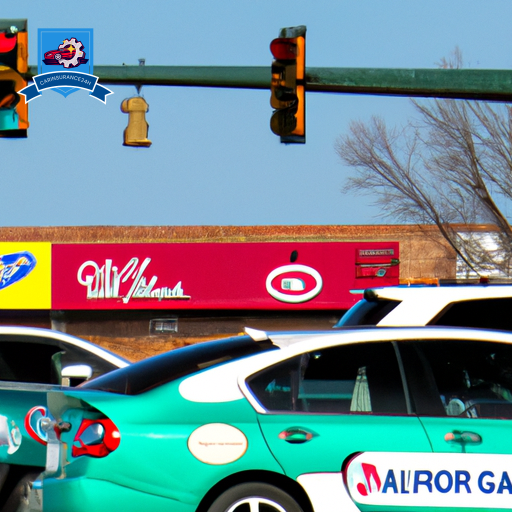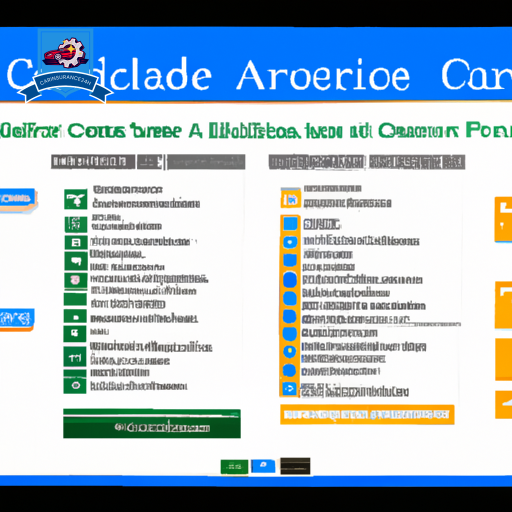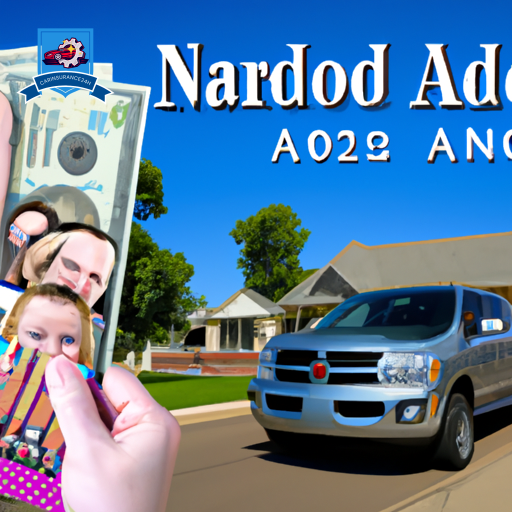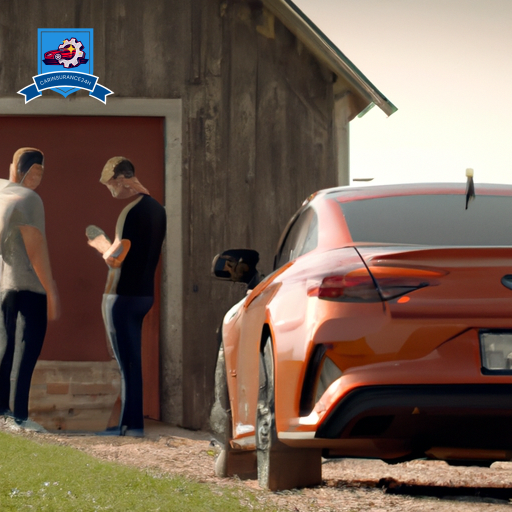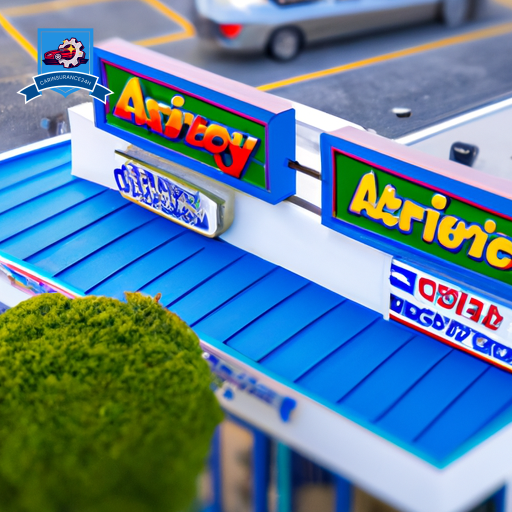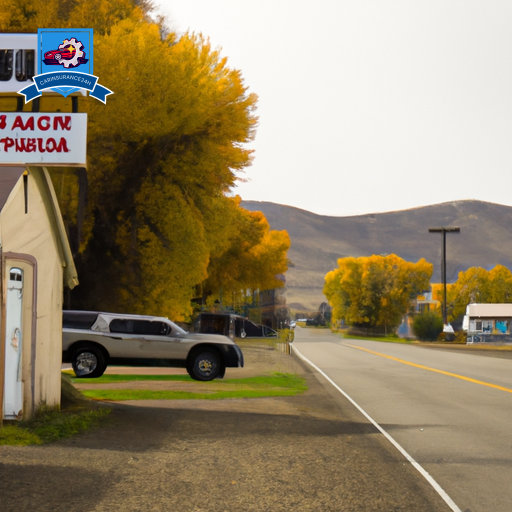Navigating the realm of auto insurance in Arizona can be a complex endeavor, with various laws, coverage options, and factors influencing premium rates. Understanding the state’s minimum coverage requirements, the nuances of liability coverage, and strategies for reducing insurance costs are just the tip of the iceberg. In a landscape where insurers offer a plethora of options, finding the right provider can make a significant difference. However, ensuring that your policy aligns with your needs and circumstances is where the real challenge lies.
Arizona Auto Insurance Laws
In Arizona, auto insurance laws mandate certain minimum coverage requirements for drivers to legally operate a vehicle on public roads. Understanding Arizona auto insurance rates and insurance requirements is crucial for all drivers in the state. Arizona operates on a traditional fault-based system when it comes to auto insurance, meaning the at-fault driver is responsible for covering the costs of an accident.
Arizona law requires drivers to have a minimum of $25,000 in bodily injury liability coverage per person and $50,000 per accident. Additionally, drivers must carry at least $15,000 in property damage liability coverage. This coverage helps pay for the medical expenses, lost wages, and property damage resulting from an accident where the insured driver is at fault.
When it comes to Arizona auto insurance rates, several factors come into play. These include the driver’s age, driving record, location, the type of vehicle insured, and the selected coverage options. Younger drivers or those with a history of accidents or traffic violations may face higher premiums. Conversely, drivers with a clean record and those who live in areas with lower crime rates might enjoy more affordable rates.
Understanding these Arizona insurance requirements and the factors that influence auto insurance rates can help drivers make informed decisions when choosing their coverage options.
Minimum Coverage Requirements
Meeting the minimum coverage requirements for auto insurance in Arizona is essential for drivers to comply with state laws and protect themselves financially in the event of an accident. Arizona law mandates specific minimum coverage requirements for all drivers. These requirements are put in place to ensure that individuals have a basic level of financial protection in case of an accident.
Here are three key points regarding minimum coverage requirements in Arizona:
-
Coverage Options: Arizona drivers must have liability insurance that includes at least $25,000 bodily injury per person, $50,000 bodily injury per accident, and $15,000 property damage per accident. This coverage helps pay for the other party’s medical bills and property damage if you are at fault in an accident.
-
Comparison Shopping: While meeting the minimum requirements is necessary, it is also essential to consider additional coverage options that may better protect you in various situations. It is recommended to compare quotes from different insurance companies to find the best coverage at the most competitive rates.
-
Premium Rates: Insurance premiums can vary based on factors such as the driver’s age, driving history, type of vehicle, and coverage limits. Opting for only the minimum required coverage might result in lower premiums, but it could leave you financially vulnerable in case of a severe accident. Consider your budget and coverage needs when selecting an insurance policy.
Factors Affecting Insurance Rates
Factors influencing auto insurance rates in Arizona encompass a range of variables that insurers analyze to determine the cost of coverage for individual drivers. These factors play a crucial role in the premium calculation, impacting how much a driver pays for their auto insurance policy. Understanding these elements can help drivers make informed decisions when selecting an insurance plan. Some of the key factors that influence insurance rates in Arizona include:
| Factors | Description | Impact on Premium |
|---|---|---|
| Driving Record | History of accidents and tickets | Higher risk drivers may face increased premiums |
| Vehicle Type | Make, model, and age of the car | Expensive or high-performance cars may lead to higher premiums |
| Age and Gender | Driver’s age and gender | Younger drivers and males are often charged higher rates |
| Location | Where the vehicle is parked | Urban areas may have higher rates due to increased risk |
Insurers use these factors, among others, to assess the level of risk associated with insuring a particular driver. Those deemed as higher risk may face higher premiums to offset the potential costs of claims. By being aware of these factors, drivers can take steps to potentially lower their insurance rates, such as maintaining a clean driving record or choosing a vehicle that is less expensive to insure.
Types of Coverage Options
When evaluating auto insurance options in Arizona, drivers can choose from a variety of coverage types tailored to their specific needs and preferences. Understanding the different coverage options can help drivers make informed decisions when selecting the right policy for their vehicles. Here are three key aspects to consider:
-
Coverage Exclusions: It is crucial for drivers to be aware of what their insurance policy does not cover. Common exclusions may include intentional damage, racing activities, or using the vehicle for commercial purposes. By understanding these exclusions, drivers can avoid potential claim denials and ensure they have appropriate coverage for their needs.
-
Claim Process: Knowing how the claim process works can save drivers time and stress in the event of an accident. Understanding the steps involved, such as reporting the incident, providing documentation, and working with insurance adjusters, can streamline the process and help drivers get back on the road as quickly as possible.
-
Additional Options and Policy Discounts: In addition to standard coverage options, insurance companies may offer additional features such as roadside assistance, rental car reimbursement, or gap insurance. Policy discounts, such as those for safe driving records or bundling multiple policies, can also help drivers save money on their premiums. Exploring these additional options and discounts can lead to a more comprehensive and cost-effective auto insurance policy.
Liability Coverage Explanation
Exploring the intricacies of liability coverage in auto insurance policies is essential for drivers to grasp the financial protection it provides in the event of an accident. Liability coverage is a mandatory component of auto insurance in Arizona, designed to protect you financially if you are found legally responsible for injuring someone else or damaging their property in a car accident.
Liability coverage consists of two main components: bodily injury liability and property damage liability. Bodily injury liability helps cover the costs associated with the other party’s injuries, such as medical expenses, lost wages, or legal fees. Property damage liability, on the other hand, covers the costs of repairing or replacing the other party’s property that you damaged in the accident.
When selecting a liability coverage policy, it is crucial to understand the liability limits. These limits represent the maximum amount your insurance company will pay for a covered claim. For example, if you have a bodily injury liability limit of $50,000 per person and $100,000 per accident, your insurance would cover up to $50,000 for one person’s injuries or up to $100,000 total for all injuries in a single accident.
It’s important to choose liability coverage options that align with your financial assets and potential risks to ensure adequate protection in case of an accident. Understanding the nuances of liability coverage and selecting appropriate limits can provide peace of mind and financial security on the road.
Collision Coverage Details
Collision coverage details are crucial when considering auto insurance in Arizona. Understanding coverage limits is essential to ensure adequate protection in case of an accident. Additionally, carefully evaluating deductible options can help tailor the policy to individual needs and budget constraints.
Coverage Limits Explained
The specified limits in auto insurance policies dictate the maximum amount an insurer will pay for collision coverage in Arizona. When considering coverage limits for collision insurance, it’s crucial to understand the following:
-
Bodily Injury Liability: This part of the policy covers medical bills and lost wages for others involved in an accident that you are found responsible for.
-
Property Damage Liability: This coverage helps pay for damages caused to someone else’s vehicle or property in an accident where you are at fault.
-
Comprehensive Coverage: This optional coverage protects your vehicle from damages not caused by a collision, such as theft, vandalism, or natural disasters.
Deductible Considerations
Understanding the deductible considerations in collision coverage is essential for making informed decisions regarding your auto insurance policy in Arizona. When selecting a deductible, you typically have options ranging from $250 to $1,000 or more. Opting for a higher deductible can lead to potential savings on your premiums, but it also means you’ll be responsible for a greater amount out of pocket before your insurance coverage kicks in. It’s crucial to weigh the deductible amount against your financial situation and risk tolerance. Additionally, be mindful of how your deductible choice impacts your coverage limits. Lower deductibles often come with higher premiums but may provide more comprehensive coverage in the event of an accident.
Comprehensive Coverage Overview
Comprehensive coverage in auto insurance provides protection against non-collision incidents, such as theft, vandalism, or natural disasters. This type of coverage offers a broader scope of protection compared to collision coverage alone. Understanding the benefits of comprehensive coverage can help policyholders make informed decisions to safeguard their vehicles.
Coverage Types Explained
Exploring the various coverage types in auto insurance can provide a comprehensive understanding of the protection available, with comprehensive coverage offering a detailed overview of its benefits and limits. Comprehensive coverage is designed to protect against damages to your vehicle that are not caused by a collision. Here are three key points to consider about comprehensive coverage:
-
Policy Exclusions: Typical exclusions from comprehensive coverage include mechanical failures, wear and tear, and maintenance issues.
-
Coverage Extensions: Some insurance companies offer extensions to comprehensive coverage, such as coverage for windshield damage, rental car reimbursement, or personal belongings inside the vehicle.
-
Deductibles: Comprehensive coverage often comes with a deductible, which is the amount you must pay out of pocket before your insurance kicks in to cover the rest.
Benefits of Comprehensive
When considering auto insurance in Arizona, delving into the benefits of comprehensive coverage unveils a layer of protection that extends beyond typical collision-related damages. Comprehensive coverage benefits policyholders by safeguarding against non-collision incidents like theft, vandalism, natural disasters, or animal collisions. This type of insurance provides financial protection for repairing or replacing your vehicle in scenarios where you’re not at fault. Moreover, comprehensive coverage can offer peace of mind by covering a broader range of risks that aren’t typically included in basic liability or collision policies. While comprehensive coverage may come with a higher premium, the potential insurance savings in the event of a covered incident can outweigh the upfront cost, making it a valuable addition to your auto insurance policy in Arizona.
Uninsured/Underinsured Motorist Coverage
Uninsured/Underinsured Motorist Coverage is a crucial component of auto insurance policies in Arizona, providing financial protection in the event of an accident involving a driver without adequate insurance. This coverage ensures that if you are hit by a driver who does not have insurance or lacks sufficient coverage to pay for damages, your own insurance policy will step in to cover the costs.
Key Points Regarding Uninsured/Underinsured Motorist Coverage:
-
Coverage Exclusions and Limits: It’s essential to understand the exclusions and limits of your uninsured/underinsured motorist coverage. Some policies may not cover hit-and-run accidents or incidents involving uninsured motorists who are family members on the same policy. Additionally, there are limits to how much your insurance will pay out, so be aware of these constraints.
-
Claim Process and Limitations: In the event of an accident with an uninsured or underinsured motorist, the claim process for this type of coverage typically involves notifying your insurance company, providing relevant documentation, and cooperating with their investigation. However, there may be limitations on the amount you can claim or specific conditions that must be met for the coverage to apply.
-
Importance of Comprehensive Coverage: While uninsured/underinsured motorist coverage is vital, it’s also advisable to consider comprehensive coverage to further protect yourself against a wider range of risks on the road.
Personal Injury Protection (PIP)
Personal Injury Protection (PIP) coverage in Arizona comes with specific limitations that policyholders should be aware of. Understanding the PIP claim process is crucial to ensure a smooth experience in case of an accident. Knowing the nuances of PIP coverage limitations and the steps involved in filing a claim can help individuals navigate the complexities of auto insurance in Arizona.
PIP Coverage Limitations
Despite its benefits, Personal Injury Protection (PIP) coverage in Arizona comes with limitations that can impact the extent of medical coverage available to policyholders. When considering PIP coverage, individuals should be aware of the following:
-
PIP Coverage Restrictions: Arizona law may limit the amount of PIP coverage available, affecting the total medical expenses covered in the event of an accident.
-
Claim Process: Understanding the specific requirements and processes involved in making a PIP claim is crucial to ensure timely reimbursement for medical expenses.
-
Cost Considerations: While PIP coverage provides valuable medical benefits, policyholders should also weigh the associated costs to determine the overall affordability and necessity of this coverage option.
PIP Claim Process
The process for filing a Personal Injury Protection (PIP) claim in Arizona involves specific steps and documentation requirements to facilitate the reimbursement of medical expenses incurred due to an accident. To initiate a PIP claim, the insured individual must promptly notify their insurance company and submit a PIP claim form. The insurer will then evaluate the claim based on the provided medical records and bills to determine the eligibility for PIP benefits. Once the claim settlement process is underway, the insured may receive compensation for medical expenses, lost wages, and other covered costs as outlined in their policy. It is essential to note that PIP coverage exclusions exist, such as injuries sustained during the commission of a felony. Understanding the claims procedure and policy coverage is crucial for a successful PIP claim.
Tips for Lowering Insurance Premiums
Implementing strategic adjustments to your auto insurance policy can effectively reduce the associated premiums, ensuring cost-effective coverage for your vehicle in Arizona. Here are three key tips for lowering insurance premiums:
-
Driver Discounts: Inquire with your insurance provider about available driver discounts. Factors such as a clean driving record, completion of defensive driving courses, or being a student with good grades can often make you eligible for discounts. Additionally, some insurers offer discounts for certain professions or affiliations, so it’s beneficial to explore all potential options for savings.
-
Annual Mileage: Consider reducing your annual mileage to lower your insurance premiums. Insurance companies often use mileage as a factor in determining premiums, as driving less typically correlates with a lower risk of accidents. By accurately reporting your annual mileage and potentially using public transportation or carpooling, you may be able to negotiate a lower premium with your insurer.
-
Vehicle Safety Features: Equipping your vehicle with safety features such as anti-theft devices, airbags, and anti-lock brakes can not only enhance your safety on the road but also lead to lower insurance premiums. Insurance companies often offer discounts for vehicles with advanced safety features, so it’s advisable to invest in these technologies to potentially reduce your insurance costs.
Finding the Best Insurance Provider
Selecting a reputable and reliable insurance provider is crucial for obtaining comprehensive coverage tailored to your specific needs and budget in Arizona. When looking for the best insurance provider, conducting an insurance comparison is essential. By comparing quotes, coverage options, and discounts from multiple insurers, you can identify the most suitable policy that meets your requirements. Many online platforms offer tools that streamline this process, allowing you to input your information once and receive quotes from various providers.
In addition to insurance comparison, reading customer reviews can provide valuable insights into the quality of service and claims handling of different insurance companies. Websites like Yelp, Google Reviews, or the National Association of Insurance Commissioners (NAIC) can offer a wealth of information from policyholders who have had direct experience with the insurers. Pay attention to reviews that mention customer service, claims processing speed, and overall satisfaction levels.
Furthermore, consider factors beyond just the premium cost when evaluating insurance providers. Look into the financial stability of the company, its complaint ratio, and the ease of reaching customer support. Ultimately, finding the best insurance provider involves a balance of affordability, coverage options, and customer service satisfaction based on thorough research and analysis.
Understanding Deductibles and Limits
To make informed decisions when selecting an insurance provider, it is essential to grasp the nuances of deductibles and limits within auto insurance policies in Arizona. Understanding claims and coverage options is crucial for determining the level of protection and financial responsibility you will have in the event of an accident or damage to your vehicle. Here are three key points to consider:
-
Deductibles: Deductibles are the amount of money you are required to pay out of pocket before your insurance coverage kicks in. Lower deductibles typically result in higher monthly premiums, while higher deductibles can lower your premium but require you to pay more upfront in the event of a claim. Assess your financial situation and driving habits to determine the deductible that aligns best with your needs.
-
Coverage Options: Auto insurance policies offer various coverage options such as liability, collision, comprehensive, uninsured/underinsured motorist, and personal injury protection. Each type of coverage protects you in different scenarios, so it’s essential to understand what each option includes and evaluate which ones are necessary based on your individual circumstances.
-
Limits: Coverage limits refer to the maximum amount your insurance provider will pay for a covered claim. It’s crucial to select limits that adequately protect your assets and financial well-being. Consider factors like your assets, income, and potential liabilities when deciding on coverage limits to ensure you have sufficient protection in case of an accident.
Importance of Reviewing Policy Regularly
Regularly reviewing your auto insurance policy is a fundamental practice to ensure that your coverage aligns with your current needs and circumstances. Policy updates are crucial to reflect changes in your driving habits, vehicle value, or financial situation. By conducting a thorough policy review, you can assess whether your coverage options are still adequate and make adjustments as necessary to avoid being underinsured.
Moreover, a policy review can help you identify opportunities for premium savings. Insurance companies frequently update their offerings and may introduce new discounts or incentives that you could benefit from. By staying informed about these changes and comparing them against your current policy, you can potentially reduce your premium costs without compromising on coverage.
During a policy review, it’s essential to consider any recent life events or changes that might impact your insurance needs. For example, if you’ve recently purchased a new vehicle, moved to a different location, or added a teen driver to your policy, these factors could affect your coverage requirements. By proactively reviewing your policy, you can ensure that you have the appropriate level of protection and avoid any gaps in coverage that could leave you vulnerable in the event of an accident.
Frequently Asked Questions
Can I Insure a Vehicle That Is Not Registered in Arizona?
When insuring a vehicle that is not registered in Arizona, one must consider the implications of out-of-state vehicles and non-resident coverage. Insurance providers may offer policies that extend coverage to vehicles registered in different states, ensuring that the vehicle is adequately protected even if it is not registered in the state of the insurance policyholder. It is essential to verify with the insurance company the specific terms and conditions regarding coverage for out-of-state vehicles.
How Does My Credit Score Impact My Auto Insurance Rates in Arizona?
Credit scores can significantly impact auto insurance rates, affecting premiums based on financial risk assessment. Insurers use credit scores to predict the likelihood of filing claims. Occupation and age demographics can also influence insurance rates. Occupations with higher risk factors may lead to increased premiums. Younger drivers often face higher rates due to limited driving experience. Understanding these factors can help individuals make informed decisions when selecting auto insurance coverage.
Are There Any Discounts Available for Hybrid or Electric Vehicle Owners in Arizona?
In the realm of sustainable transportation, Arizona offers various incentives for hybrid or electric vehicle owners. Tax incentives and rebates are available to promote the adoption of eco-friendly vehicles. Moreover, the state has been developing its charging station infrastructure to support the growing number of electric vehicles on the roads. These initiatives aim to encourage the use of alternative fuel vehicles and reduce the carbon footprint of transportation in Arizona.
What Happens if I Am Involved in an Accident With an Uninsured Driver in Arizona?
If involved in an accident with an uninsured driver, legal ramifications may arise. Liability issues could complicate matters, affecting compensation for damages. It’s crucial to understand the legal implications and potential financial losses. Seeking legal advice and exploring alternative options to recover losses could be necessary. Uninsured motorist coverage might provide some protection in such situations, ensuring you receive compensation for injuries and damages caused by an uninsured driver.
According to a recent survey, 60% of auto insurance companies nationwide offer coverage for rental cars, but with limitations. Rental coverage typically includes reimbursement for a rental vehicle in case of a covered loss to the insured vehicle. Regarding rideshare insurance, providers often require drivers to have additional coverage due to the increased risks associated with commercial driving. These requirements aim to protect both the driver and the passengers.


